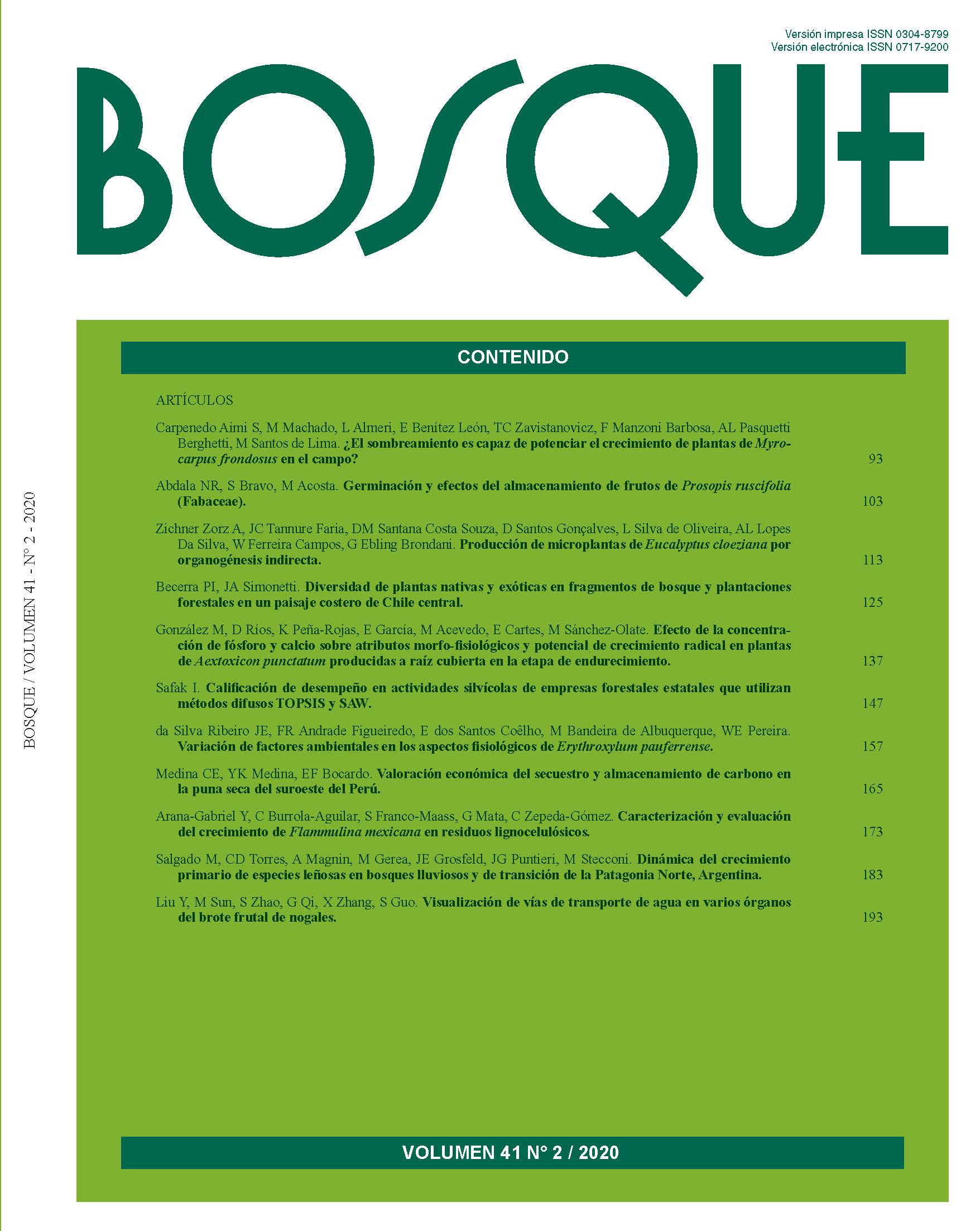The dynamics of primary growth in woody species from rain and transitional forests of Argentinean north Patagonia
Main Article Content
Abstract
Rainforests (RF) and transitional forests (TF) of Argentinean north Patagonia develop under such different climatic conditions that key aspects of seasonal growth may be assumed to differ among the woody plants that characterize these forests. This study was aimed at evaluating primary growth dynamics in tree species typical of RF and TF. Two common-garden essays were performed in Bariloche, Argentina, one with RF species and the other with TF species. The times of extension initiation and end, the duration of the extension period and the relative and absolute extension rates (RER and AER, respectively) were registered for each species. The relation between AER and air temperature was compared between species. In general, RF species had less variable times of extension initiation, extension end and time of maximum RER, and longer-lasting extension than TF species. Among RF species, extension duration was the longest for Caldcluvia paniculata (26.9 weeks, on average) and the shortest for Luma apiculata (18.9 weeks). Among TF species, the longest and shortest extension durations corresponded, respectively, to Diostea juncea (18.2 weeks) and Maytenus boaria (13.0 weeks). The extension rates of RF species tended to be more related to temperature than those of TF species. This study provides some evidence that endogenous control of growth dynamics would be tighter in TF than in RF species; the former would be better adapted to more severe climatic conditions during the primary-growth period.

